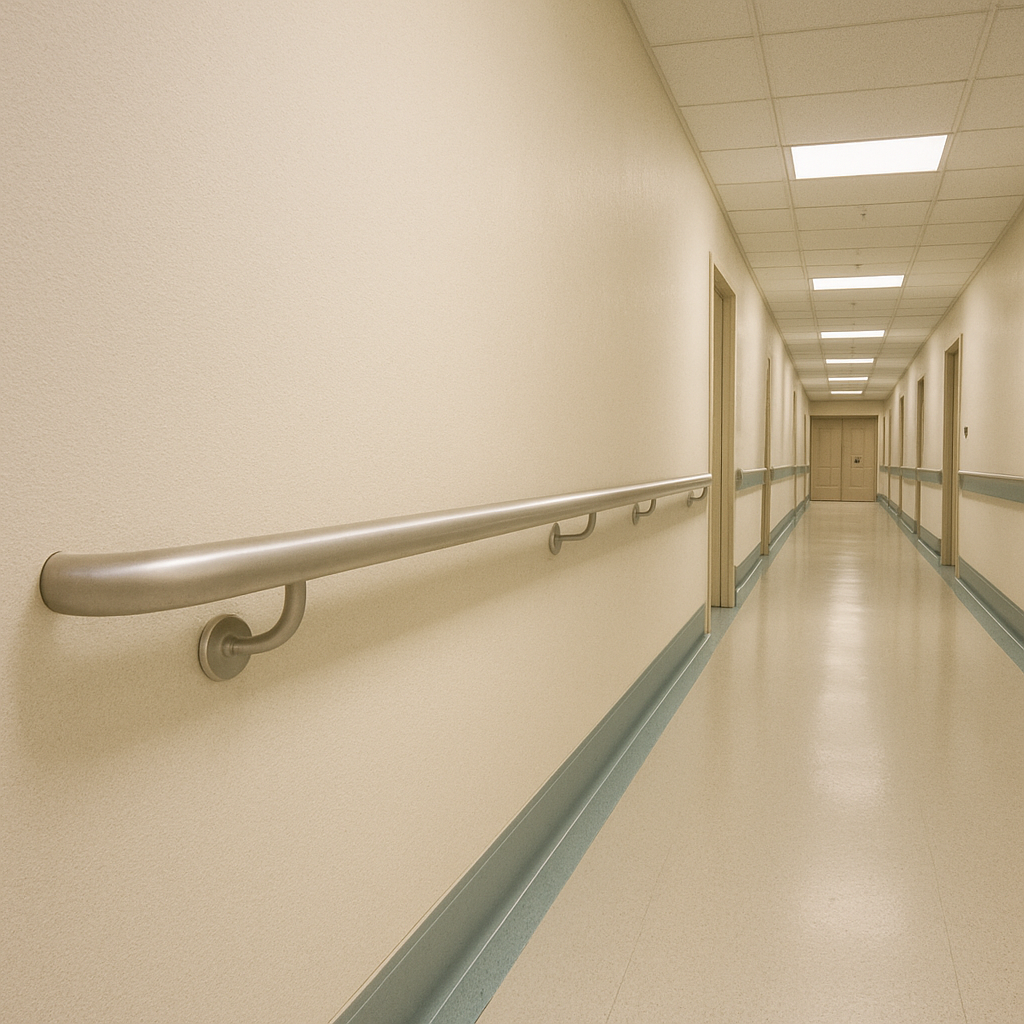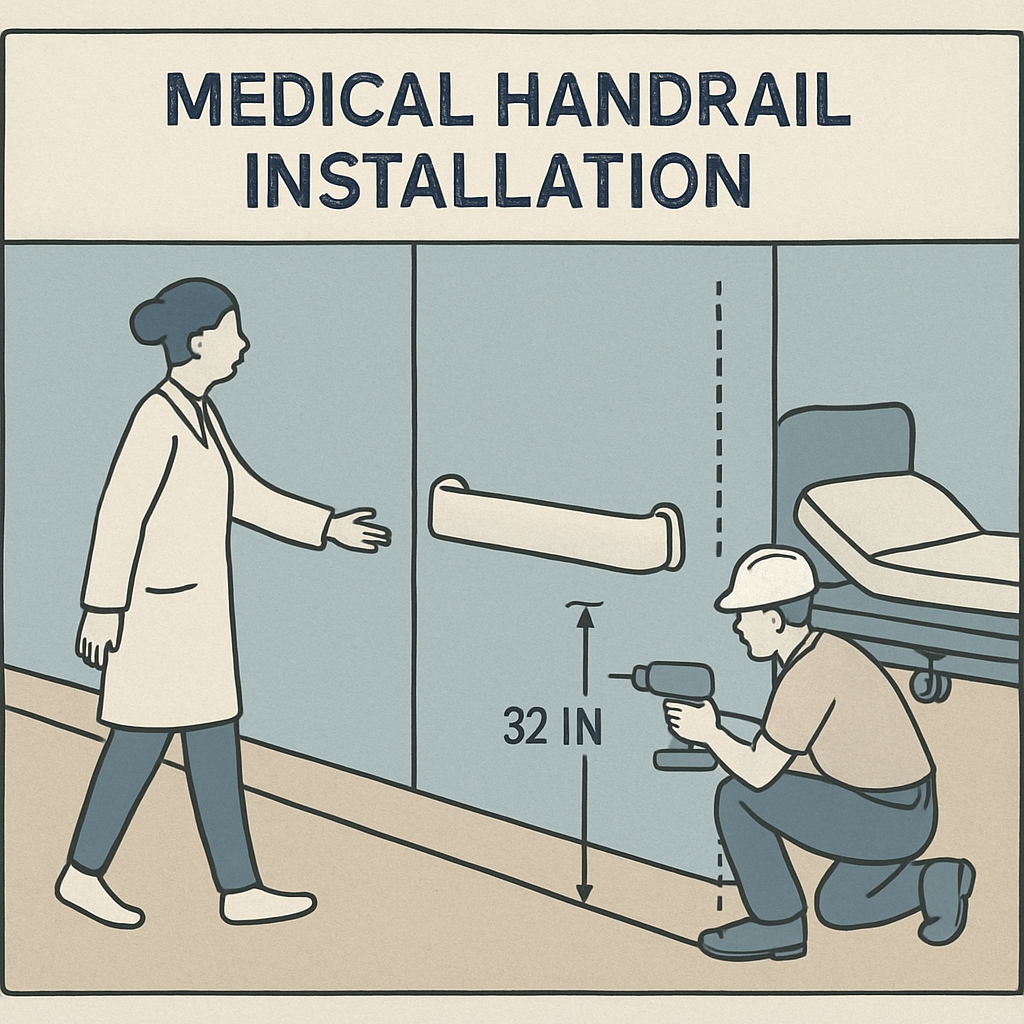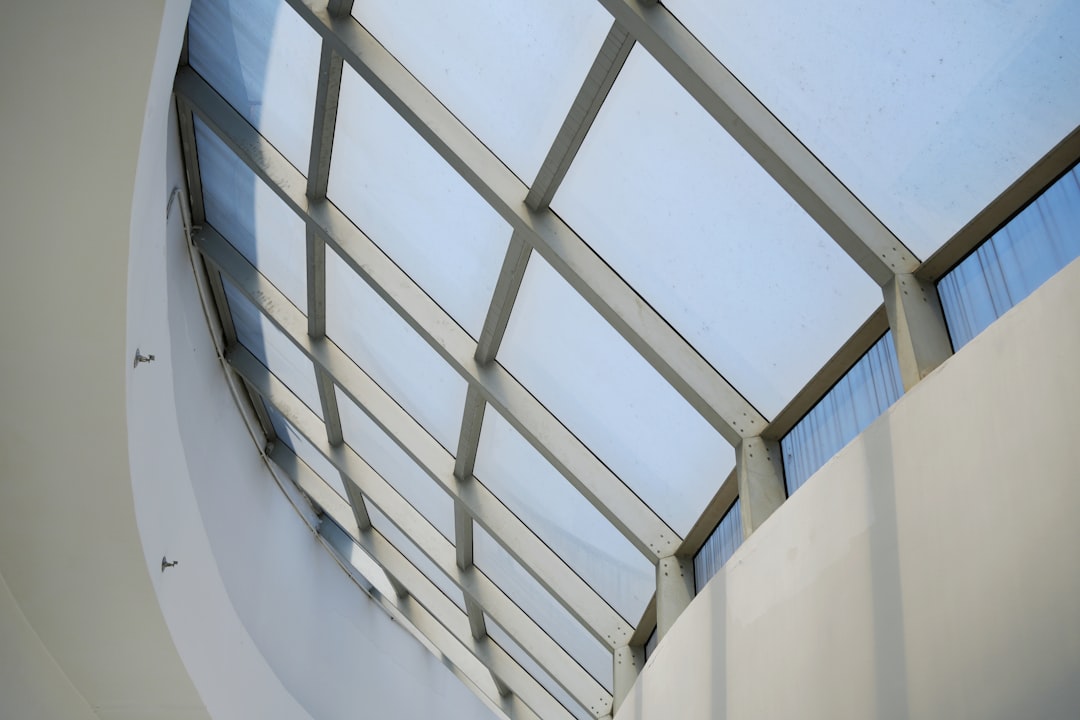 Service Hotline:13510328459
Service Hotline:13510328459
 205-206, 2nd Floor, Building 2, Xiazao Village Industrial Zone, Gaofeng Community, Dalang Street, Longhua District, Shenzhen City
205-206, 2nd Floor, Building 2, Xiazao Village Industrial Zone, Gaofeng Community, Dalang Street, Longhua District, Shenzhen City
 Service Hotline:13510328459
Service Hotline:13510328459
 205-206, 2nd Floor, Building 2, Xiazao Village Industrial Zone, Gaofeng Community, Dalang Street, Longhua District, Shenzhen City
205-206, 2nd Floor, Building 2, Xiazao Village Industrial Zone, Gaofeng Community, Dalang Street, Longhua District, Shenzhen City
Time:2025-09-17 Preview:
In today's world, ensuring safety and accessibility in medical facilities is more important than ever. One critical aspect of this is the installation of medical handrails. These handrails are not only vital for safety but also comply with the Americans with Disabilities Act (ADA). In this article, we will explore the real effects of medical handrail installation and provide a comprehensive understanding of how these installations can benefit medical facilities. We will also look at ADA compliance and the importance of having a real effect diagram for these installations.
Medical handrails play a crucial role in maintaining safety and accessibility for patients, staff, and visitors in healthcare settings. They offer support and stability, particularly for individuals with mobility challenges, such as the elderly or those recovering from surgery. Handrails are often installed in corridors, staircases, and restrooms to provide assistance and prevent falls, which can lead to serious injuries.
The ADA sets guidelines to ensure that public spaces, including medical facilities, are accessible to people with disabilities. Handrails must meet specific criteria, such as height, diameter, and clearance, to be considered ADA-compliant. By adhering to these guidelines, healthcare facilities not only comply with the law but also create a safer and more inclusive environment for everyone.

A real effect diagram is a visual representation that illustrates the impact of medical handrail installation in a facility. This diagram helps stakeholders understand the benefits of handrails and how they contribute to overall safety and accessibility.
Handrail Placement: The diagram should show where handrails are installed, such as along corridors, near elevators, and in restrooms. This helps identify high-traffic areas where handrails are most needed.
Safety Impact: The diagram should highlight how handrails reduce the risk of falls and injuries. This can be represented through statistics or visual indicators, such as arrows pointing to areas where accidents are most likely to occur.
ADA Compliance: The diagram should indicate whether the handrails meet ADA guidelines. This can be shown through symbols or notes that specify the height, diameter, and clearance of the handrails.
Accessibility Benefits: The diagram should emphasize how handrails improve accessibility for individuals with disabilities. This can be illustrated through images of people using the handrails or testimonials from patients and staff.

Before installing handrails, it's essential to assess the facility to determine the areas where they are most needed. This involves evaluating high-traffic zones, potential hazards, and areas where accessibility needs improvement. Consulting with facility managers, staff, and patients can provide valuable insights into where handrails will have the most significant impact.
Selecting the appropriate handrails is crucial for ensuring safety and compliance. Handrails should be made of durable materials, such as stainless steel or aluminum, to withstand daily use and resist corrosion. They should also be easy to clean and maintain, particularly in medical settings where hygiene is a priority.
To comply with ADA guidelines, handrails must be installed at the correct height, typically between 34 and 38 inches from the floor. They should have a diameter of 1.25 to 2 inches, with a minimum of 1.5 inches of clearance from the wall. Ensuring these specifications are met is essential for creating an accessible environment for all users.
Proper installation is key to ensuring the effectiveness of handrails. They should be securely anchored to the wall, with brackets spaced no more than 6 feet apart. It's also essential to ensure that handrails are continuous and free from obstructions, such as electrical outlets or signage.
To maintain the safety and functionality of handrails, regular inspections and maintenance are necessary. This includes checking for loose brackets, rust or corrosion, and any damage that may compromise the handrail's integrity. Prompt repairs should be made to address any issues and ensure continued safety.

Handrails significantly reduce the risk of falls and injuries, particularly for individuals with limited mobility. By providing support and stability, they help users navigate through medical facilities with confidence and ease.
ADA-compliant handrails make healthcare settings more accessible for people with disabilities. They ensure that individuals can move independently and safely throughout the facility, promoting inclusivity and equal access to medical services.
Patients and visitors appreciate the added safety and accessibility provided by handrails. This can lead to increased satisfaction and positive feedback, which is crucial for maintaining a facility's reputation and attracting new patients.
Installing ADA-compliant handrails helps healthcare facilities meet legal requirements and avoid potential fines or lawsuits. This demonstrates a commitment to accessibility and safety, which can enhance the facility's credibility and trustworthiness.
Medical handrail installation is a vital aspect of creating safe and accessible healthcare environments. By understanding the importance of handrails, ensuring ADA compliance, and utilizing real effect diagrams, medical facilities can enhance safety, improve accessibility, and boost patient satisfaction. Regular maintenance and inspections further ensure that handrails continue to serve their purpose effectively. By prioritizing these installations, healthcare providers can demonstrate their commitment to inclusivity and care for all individuals who enter their facilities.
